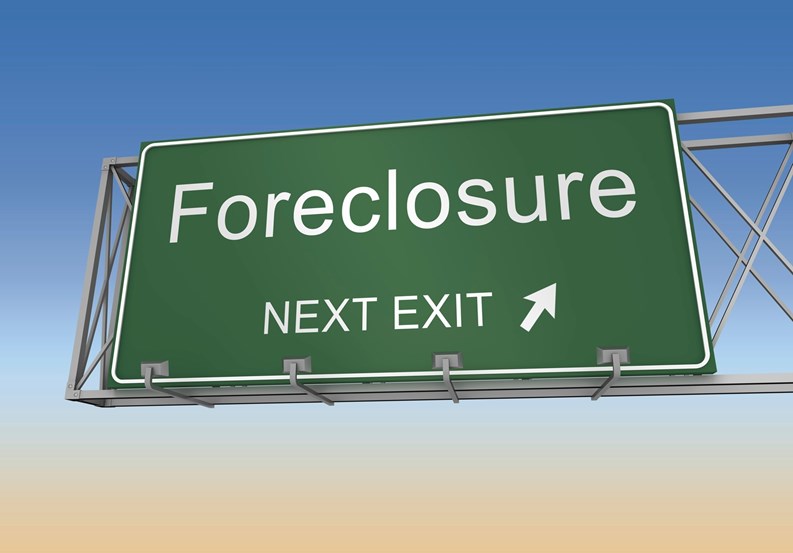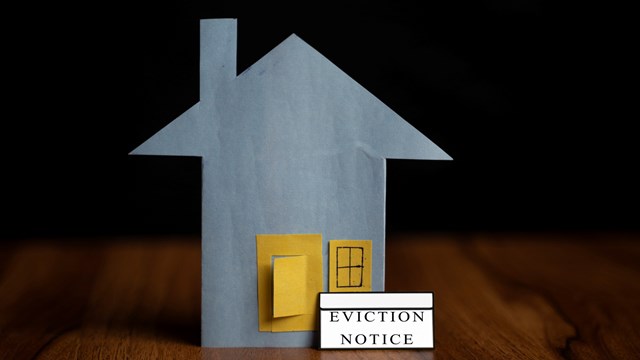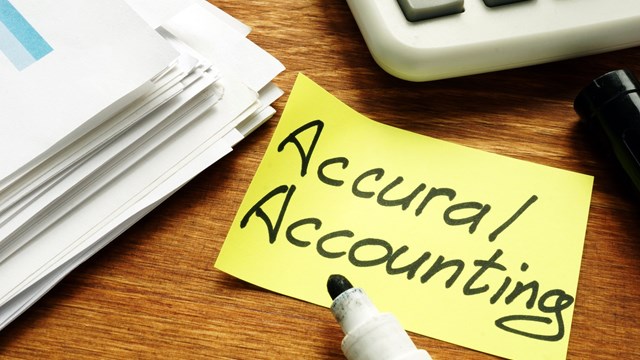The first of the month rolls around and it’s time to pay the monthly dues that keep the building operational. Repairs might need to be made, maintenance done, bills paid to keep all the common elements running and those dues make it all happen. Sometimes though—not often, but sometimes—someone will be unable to pay.
“Occasionally it might be a dispute, but more often, it’s just that they don’t have the ability to pay. In Massachusetts, our case law and statutes are really clear that condo fees are the lifeblood of associations; they pay for essential services, so they’ve been analogized to real estate taxes which you must pay even under protest. There’s not a good reason or winning reason in Massachusetts to not pay,” says Stephen Marcus, a partner with the law firm of Marcus, Errico, Emmer & Brooks, P.C., in Braintree, Massachusetts.
Michael W. Merrill, founding partner of the Boston law firm of Merrill & McGeary, adds, “It's all personal to the owner; you can’t really generalize it— whether they have the money but they’re prioritizing it elsewhere, or they just don’t have any money at all. Whether they have a health problem which is causing them to lose income, whether they have lost their job because they don’t have income. Generally, it is a personal experience of the unit owners that’s causing this. Occasionally, you do run into unit owners that are upset with the way the board is running the condominium, but I would say that’s a small segment of that population.”
While the fees might be due at the beginning of the month, sometimes boards choose to have a grace period, says David Abel, CMCA, a property manager and senior vice president with The Niles Company in Canton, Massachusetts, “The fees are due on the first, but most boards have some type of grace period. Whether it's five, 10 or 15 days, that’s kind of standard.”
“Up here (in Massachusetts) we have Chapter 183A section 6, which actually talks about sending a 60-day notice of delinquency. And so that’s when the boards tend to go to the lawyers but that doesn’t mean that they don’t start their own process prior to that time. It may be after a certain grace period has passed that the manager will send out a notice to the owner, whether that be 10 days, 15 days whatever, two days, whatever their policy is,” says Merrill.
“So we like to see the cases turned over [to the law firm] at about 61 days,” says Marcus.
Working Together to Catch Up
Just because the lawyers get involved it doesn’t mean that the entire process needs to be solved by the legal system. There are still ways for the board to work with unit owners to make sure there is a good outcome.
“Both parties need to work together. It’s incumbent on the unit owner who has the hardship to come forward and suggest a payment plan and explain how they’re going to catch up. Hopefully, at the end of that plan they should be caught up and paying on time. If it’s a reasonable plan the board should definitely consider it,” says Marcus.
Coming up with a payment plan is perhaps the most common way for boards and residents to deal with the issue of non-payment without resorting to far more drastic measures, but both sides need to make sure it’s a reasonable agreement.
Say “they fell behind, somehow they are able to pull it together and they do engage in communication. Usually by then it’s with an attorney, and unfortunately, the attorney banged them with some charges. It could be a $1,000 once they get to a certain point, whatever the number is. But anyway, we try to freeze it and say, ‘Okay, look, you have an arrearage of ‘X.’ And the person is expressing an interest in making payment plan, we say ‘Okay, typically we advise our boards, and the board is our client.’ We say ‘Look, you know, depending on the circumstances of the condominium, a trust, it’s probably reasonable to give them a six- to 12-month time period to pay their fees currently and to pay down the arrearage.’ So let's say it’s... easy number is $1,200, and they pay you a $100 for 12 months, they’re caught up,” says Abel.
Part of the reason it’s important to maintain open lines of communication with unit owners is that there are times that unit owners know they will be in trouble if big costs are coming down, like special assessments, and will need help making the payments.
“Oftentimes we do agree on payment plans with the unit owners, either payment plans because they are behind and there is a large amount owed, or payment plans because they recognize that they are going to have a problem and they need some relief. And you might run into that more often in the special assessment situation where they come, a large amount comes in a bill and they know that they can't pay it,” says Merrill.
All of this, of course, is at the discretion of the board. It should be noted though that there is a risk should boards go this route.
Merrill notes, “They're taking a risk that payment may not be made timely, and they may in fact be getting behind in their priority lien situation, because they have to file a lien action within six months in order to guarantee that the lender will pay in the event of a foreclosure.”
When Payment Still Doesn’t Come
If everything fails and the unit owner is still unable to catch up or just refuses to pay their dues, there are still legal options available.
“Well, there is a legal remedy in Massachusetts Chapter 183A Section 6, sets forth the legal remedy and you have to follow that process,” says Merrill, “The process is multi-steps. First step is send the 60-day notice of delinquency. And then you wait 30 days. If there is no payment or no resolution, then you have to send a 60-day notice of delinquency to the mortgagees of record and a separate letter, a 30-day notice of intent to foreclose lien. So, you’re sending one letter saying, ‘Oh, by the way, your borrower is in arrears 60 days,’ and then you're sending a second letter saying, ‘If you don't make payment within 30 days, we're going take the next step.’ And the next step is filing what we call a lien action, which is actually just filing a lawsuit in the district or superior court, and then we record that lawsuit in the registry of deeds.”
From there, according to Merrill, “you litigate the lien action, which as I said is really just a lawsuit. You litigate the lawsuit against the unit or to a conclusion, which is known as a judgement. And then comes the execution. And when you get the execution, then pursuant to Chapter 183A, you can sell the unit at either a sheriff’s sale or an auctioneer’s sale.”
“When we file a complaint one of two things happen: because we have a limited liability lean, there’s great incentive on the part of the lender so that we don’t get top priority head of the first mortgage holder for six months of condo fees, there’s great incentive on the part of the lender and will have to comply with Fannie Mae servicing guidelines that say they can’t let an association get priority over them for them to pay, but the other alternative is we just proceed with the action to foreclose and get an order from the court authorizing us to sell the unit at a public auction. To hopefully pay off the amounts owed to the association, and presumably since we’re ahead of the lender, because we have a limited foreclosure lien, the lender typically goes to the foreclosure sale and either bid in based on what they would have bid in if it were their own sale or if someone outbids what they were going to bid in let the property go to a third party,” says Marcus.
Merrill adds, “You have the court order. The court order sets forth a series of things that have to be done. But, the requirements were set forth in another statute, Chapter 254 Section 5 and 5C. So you follow 183A, you follow 254 5 and 5C. And the steps basically are, you need to advertise the sale in a paper of general circulation for three consecutive weeks. Up here, we use The Globe or The Herald, but if you’re in a smaller area, you could use The Tab or some local newspaper. You also have to cover yourself, so that you use diligent efforts to maximize the sale proceeds, in order to make sure the borrower or not the borrower, make sure the unit owner does not allege any way you failed to maximize their sale price. So we often also hire an auctioneer. So not only do we run the three legal ads, but then we’ll run a display ad, and then use the auctioneer and their contacts to bring more people to the sale, which is an auction form of the sale, similar to a bank foreclosure.”
“On the date of the foreclosure, it’s not done within the unit since the resident might still be there, it’s done outside the unit and it goes to the highest bidder. Based on the memorandum of sale and typically within 30-45 days from the sale they have to close with the association on the unit. Once they close the start dividing up the money, with the association getting what it’s owed, the lender hopefully getting what it’s owned (depending on the size of the bid), and the new owner takes ownership. If the old owner leaves willingly that’s great, but if not that becomes the new owner’s problem,” says Marcus.
“One of the considerations is sometimes the trustees will consider buying the unit, and so, we’ll have that discussion each time as it comes because sometimes the board, and I don’t mean the board, but the community. The board may buy it on behalf of the community. For whatever reasons, they think it’s a good thing to do. Again, really, really rare, at least where I am in New England,” says Abel, “But that's one of the conversations we always have. But typically it's in the hands of the attorney, and we just stay in very close contact with the attorneys and say, ‘Okay. What's the status? What do you want us to do?’ Sometimes there are weird things like the person is gone and it's often what happens if it actually ever gets to foreclosure, and the heat's been turned off, let's say. And it’s wintertime. And so, we’ve had to put the electricity in the name of the trust to keep the thing safe. And so, there’s a little bit of administrative effort there that is a hassle because you have to go to the utility company and get it turned on, get it turned off, all that stuff. So that you get a hodgepodge of things sometimes you have to do that’s in conjunction with that effort.”
In the end though, once the unit is bought, evicting the previous owner isn’t the board’s problem—unless they’re the ones who bought the unit.
“The owner’s unit gets sold to a third party, who then takes all of the burden. The third party pays whatever the purchase price is. The purchase price hopefully includes all the money owed to condominium association. And then the balance, if there's a surplus, is paid to the unit owner. And the third party has to take responsibility for getting possession. Possession is not the association’s problem. It's the third party’s problem,” says Merrill.
So when it comes time for the eviction, it’s all the new owner’s problem.
John Zurz is a staff writer for New England Condominium and other publications.







Leave a Comment